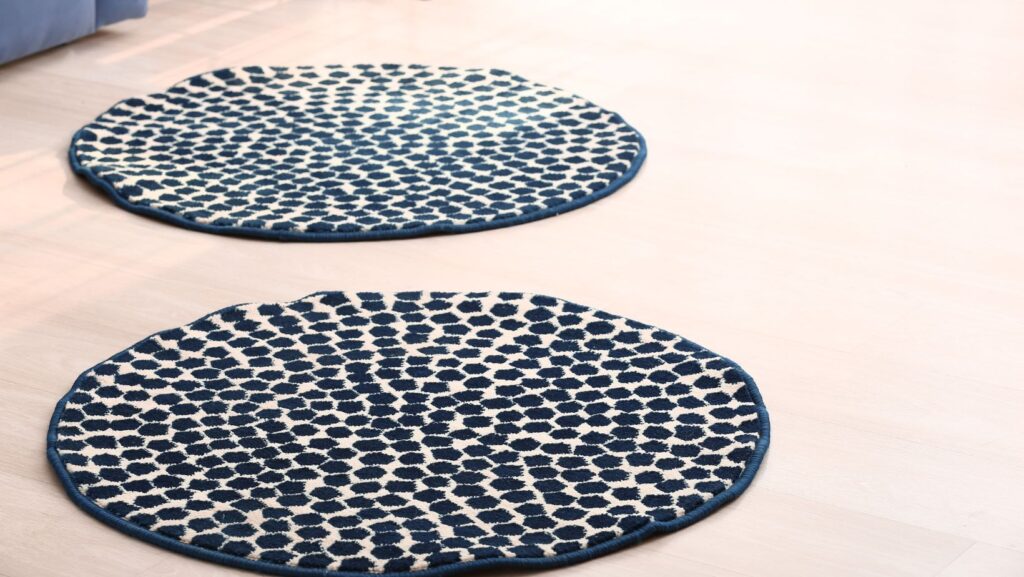Designing a unique rug for your home allows you to express your personal style and meet specific needs within your space. With a custom-made rug, the possibilities are wide open. You can choose from various sizes, shapes, colors, and materials that fit perfectly with your interior design. For instance, customers can explore options to create a custom made rug that matches their living room or kitchen’s aesthetic.
Another option is deciding on the material and texture. Materials can range from natural fibers like wool to synthetics, each offering a different feel and appearance underfoot. Designers often tailor rugs to align with lifestyle needs, whether for a cozy bedroom setting or a high-traffic living room area. This flexibility ensures that your rug is not only visually appealing but also functional for your lifestyle.
Shape and style are also important components of customization. Whether you envision a classic rectangle, a bold circle, or something more innovative, the choices are vast. This freedom allows individuals to design a rug that not only fits their space perfectly but also reflects their unique taste and creativity.
Designing Your Custom Rug
Creating a custom rug involves selecting the right size and shape, choosing materials that provide both aesthetic appeal and comfort, and incorporating design elements that reflect your unique style. By paying attention to these aspects, you can design a rug that fits perfectly in your home and meets your preferences.
Choosing the Right Size and Shape
When designing a custom rug, size and shape are important considerations. Whether you need a custom-sized rug for an odd-shaped room or a classic rectangle, measuring your space accurately is crucial. Use a tape measure to determine the dimensions, considering how much of the floor you want to cover. Taking into account how the rug interacts with your furniture is also important to ensure a cohesive look.

Shapes can range from traditional square and rectangular to more unusual forms like hexagons, ovals, or circles. The shape should align with the room’s layout and your furniture arrangement. In larger rooms, the choice of shape can either complement or contrast with the space, creating a visually striking design. For instance, circular rugs can soften the angular lines of furniture, while rectangular rugs are perfect for defining areas in open-plan living spaces. Keep these points in mind to ensure the rug covers the area you want while allowing for a balanced and visually pleasing layout.
Selecting Materials for Aesthetics and Comfort
The material choice affects both the look and comfort of a custom rug. Options like wool, cotton, and synthetic blends offer different textures and durability. Wool provides a luxurious touch and is suitable for cozy or high-traffic areas.
Consideration of the room’s function will guide the choice of material. For example, a plush material might suit a bedroom, whereas a sturdy option could work better in a living room.
Incorporating Style and Design Elements
Infusing style and design elements into a rug can elevate the look of a space. Whether it’s a specific pattern or a bold color, these attributes allow the rug to become a focal point or complement other features in the room. Custom rug printing offers endless possibilities in terms of patterns and colors.
Choose design elements that reflect your personal taste. This makes the rug a unique addition to your decor and ensures that it harmonizes with your overall design scheme.
Placing Your Custom Rug in the Home
Creating a unique look in your home involves thoughtful rug placement. Positioning impacts the room’s dynamics and the need for accessories like rug pads.
Determining the Appropriate Space
When placing a custom rug, the room’s purpose and size are essential considerations. Start by measuring the area to ensure the rug fits well without overwhelming the space. Living rooms benefit from larger rugs that allow furniture legs to rest on them, defining the seating area. In bedrooms, smaller rugs can be placed on either side of the bed or a large one, underpinning it for added warmth and style. Dining areas should accommodate a rug that allows all chairs to remain on the rug when pulled out. This prevents tripping hazards and keeps the room looking balanced.
Improving Room Dynamics with Rug Positioning
Rug positioning affects not just the visual balance of the room but also the flow of movement. Placing a rug centrally can tie together separate pieces of furniture, making the room feel more cohesive. In a living area, aligning the rug with the edges of the sofa can create a unified look. In bedrooms, positioning a rug partially under the bed but extending into the room can create a focal point and add softness underfoot. Consider at least 12-18 inches of exposed floor around the rug’s edges to frame the design harmoniously.
Accessorizing with Rug Pads and More
Rug pads are a practical addition to any area rug. They prevent slipping and keep the rug in place, providing an added layer of comfort and protection for both the rug and the floor.

Choose a rug pad that matches the rug’s shape and size to maintain stability. In high-traffic areas, a rug pad can also help reduce wear and tear on the rug, maintaining its appearance over time. Consider coordinating accessories like throw pillows or curtains in colors that match the rug to improve the room’s overall design. Rugs not only serve as decorative elements but also tie various design elements together seamlessly.
Conclusion
Designing a custom rug offers a creative way to add personality to any room. Choosing from a variety of patterns like geometric, floral, or abstract allows for a personalized touch. Size and shape can be tailored to fit the specific dimensions of a space, complementing existing decor.
Selecting materials such as luxurious silk, soft wool, or eco-friendly jute can help meet both aesthetic and practical needs in a home. Each option offers unique characteristics that improve the room’s overall feel.
Design options are diverse, catering to tastes ranging from modern to traditional styles. This flexibility ensures that any custom rug can perfectly match the desired interior design style.


